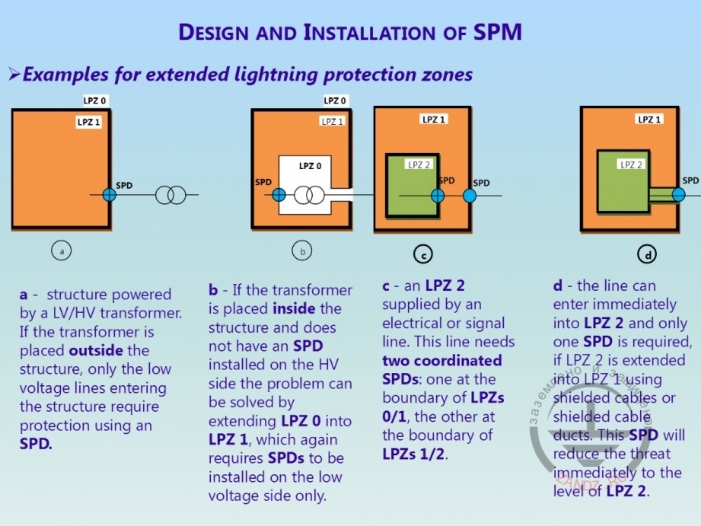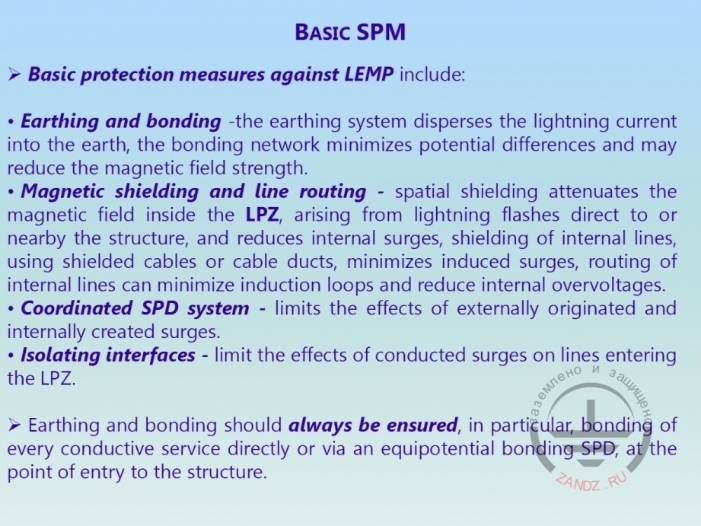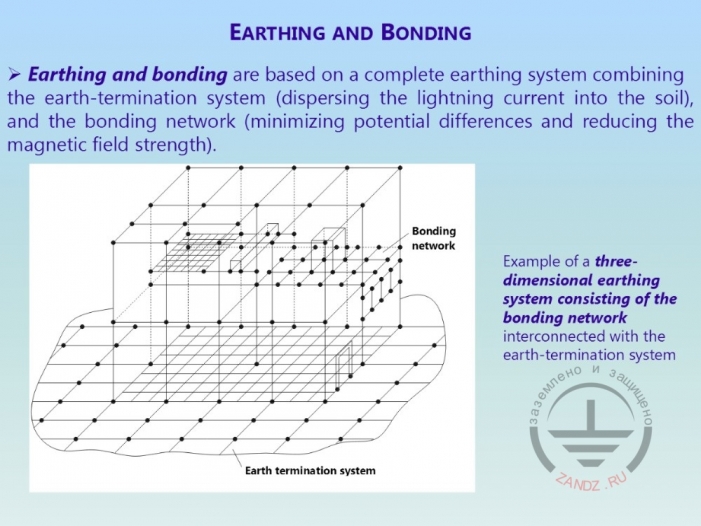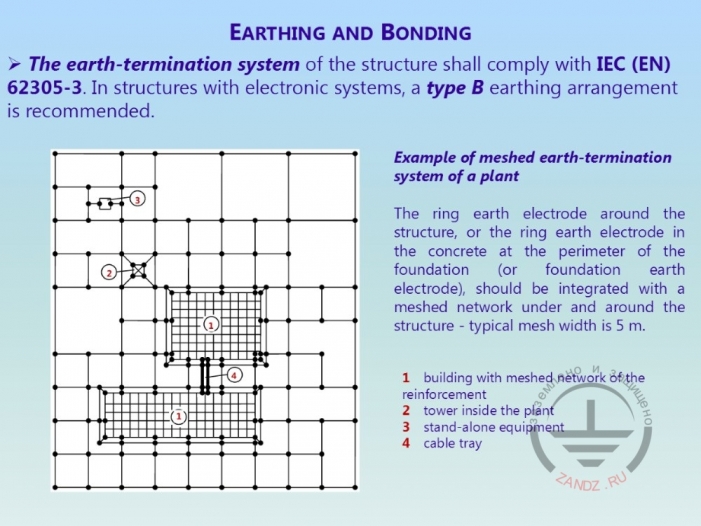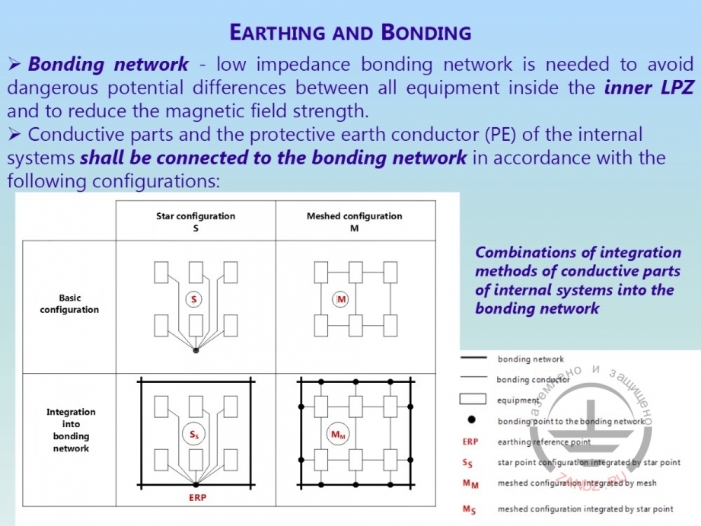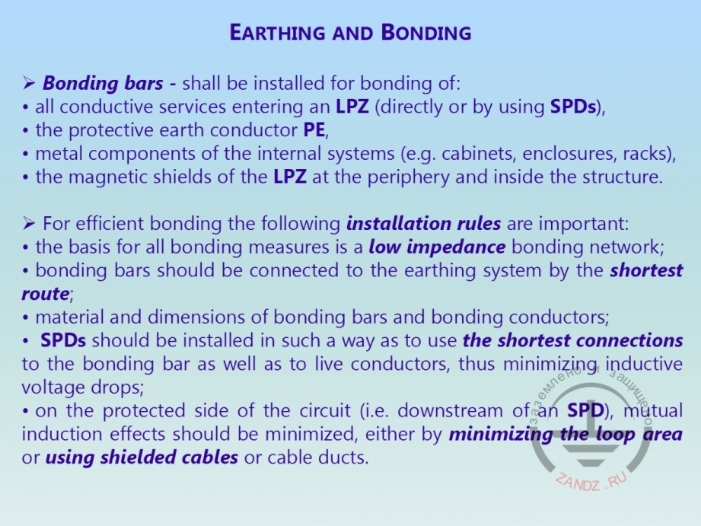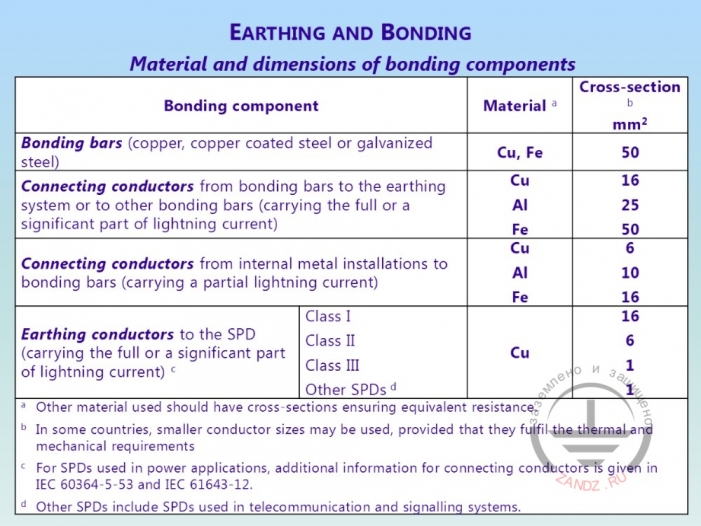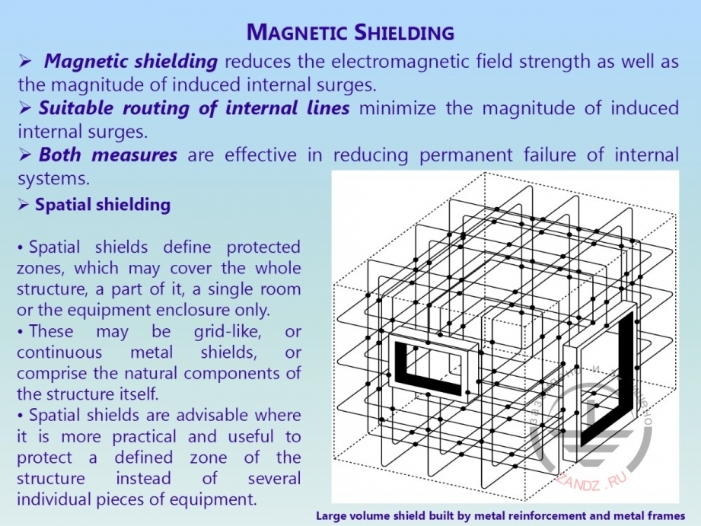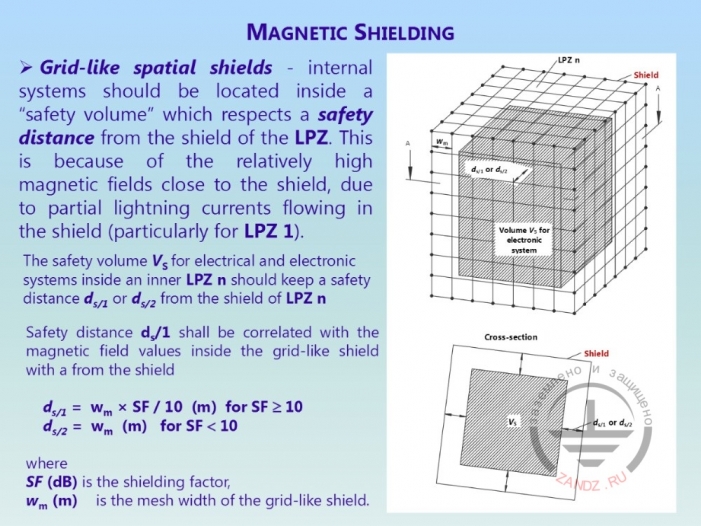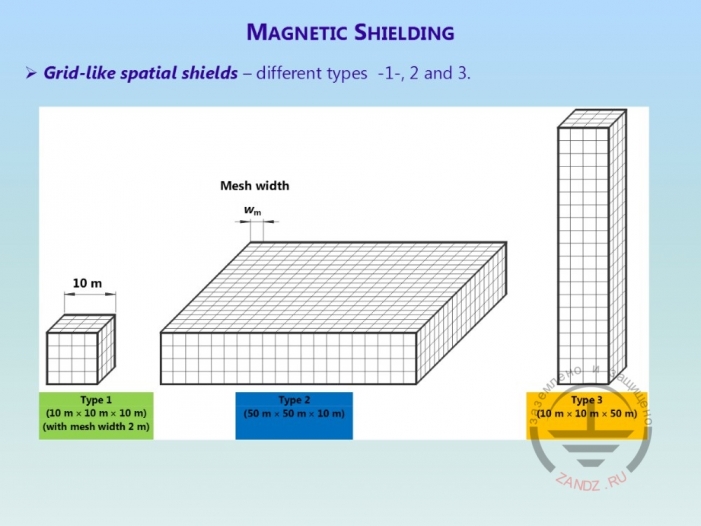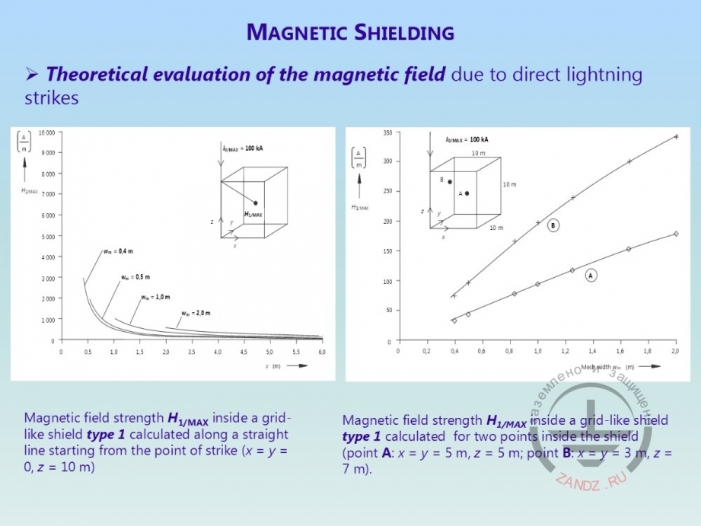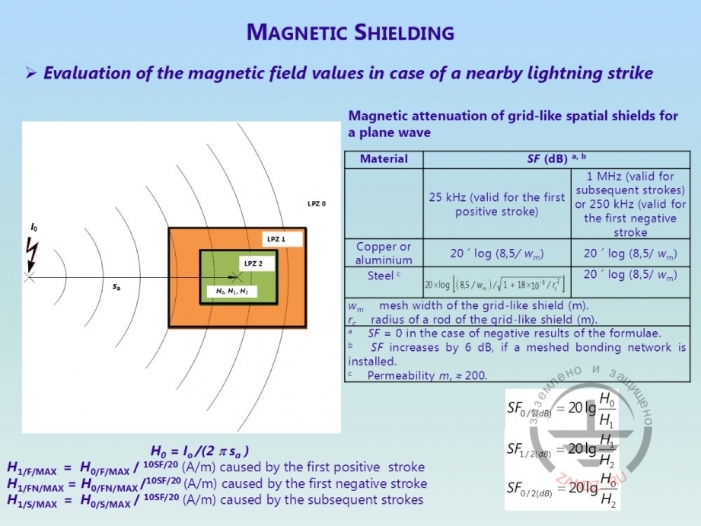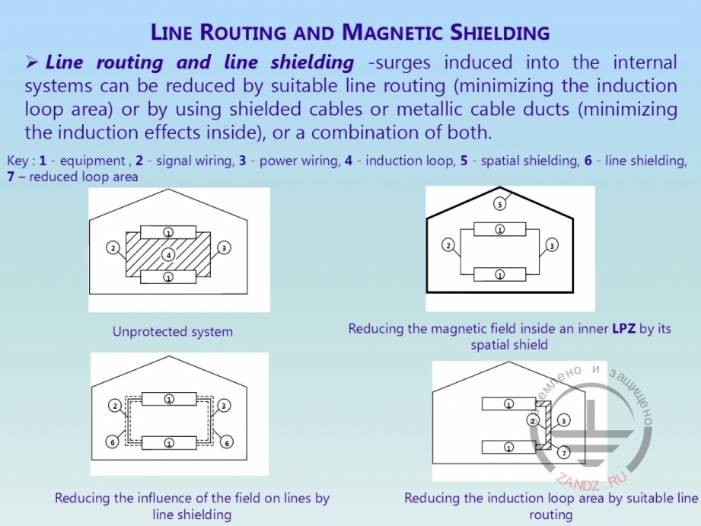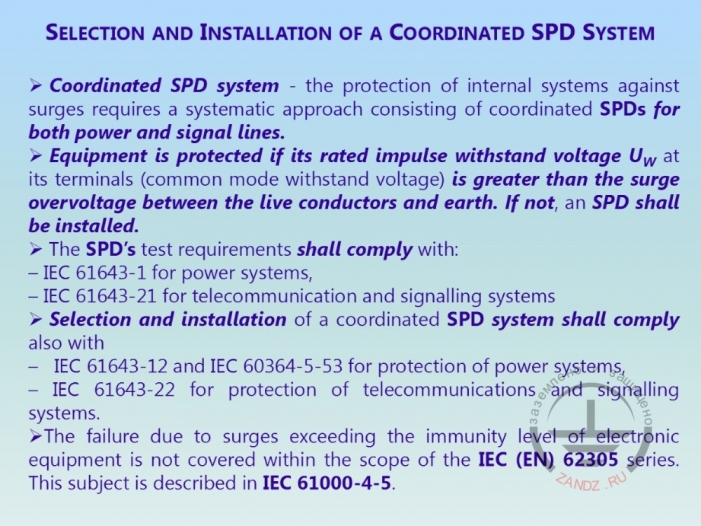The fourth webinar of a series "Grounding and lightning protection: IEC 62305 standard"
Webinar text. Page 2
Quick navigation through slides:
1. International electro technical standard IEC 62305. Part 4
2. Configuration of IEC standards
3. Main standard series
4. General information about the fourth series of the standard
5. Design and installation
6. Design of protection zone
7. Protection zones concept ideas
8. Determination of protection zones 0a and 0b
9. Internal protection zones LPZ
10. Example of internal lightning protection system
11. Coordinated systems of arresters
12. Lightning protection systems by natural shielding
13. Design and installation of pulse voltages protection measures
14. Example of connections of lightning protection zones
Page 2:
15. Transformers of low and medium voltage
16. Classification of lightning protection components
17. Magnet shielding and LEMP routing
18. Insulating surfaces
19. Grounding and bonding systems
20. Closers inside LPZ zone
21. Table of materials and dimensional sizes for shielding
22. Grid spatial shielding
23. Calculation of a safe room inside the building
24. Three types of celled shielding
25. Diagrams of values of distances from shields to objects
26. Estimation methods of electromagnetic field strength
27. Routing of electromagnetic lines and their shielding
28. Standard for signal and energy systems
29. Level of equipment ruggedness
30. Connection circuit of a conductor under voltage and closer
31. Examples of coordination of system limiters
32. Classification of SPD systems Part 1
33. Classification of SPD systems Part 2
34. Four types of damage
35. Distribution of lightning current at a direct strike
36. Example of SPD installation in TN-C system
37. Examples of integration of internal lightning protection
38. Examples of SPD systems
39. Control of measures on limitation of pulse voltages
40. SPM control
41. Maintenance of lightning protection systems
42. Questions and answers
Transformers of low and medium voltage
— More examples. If there is a transformer inside the building, very often in the country houses or even in the city buildings, there are transformers of low, high of medium voltage. If there is a line to be building between zones 0 and 1, it is necessary to install surge protection system. It is a very important requirement in Poland, when the building is connected directly. We are obliged to install surge protection system. In the second example we see when the transformer of low and medium voltage is placed inside the building. On the left picture, it was outside the building. It often happens so in large buildings, in some industrial facilities. If medium voltage line is used, we can apply zone 0 zoning, enlarge it into zone 1, but then it will be necessary to install surge protection system from the side of low voltage. On the third example we see the situation when we don't have a transformer, but we have electric or signal lines. And the equipment needs to be protected; two coordinated surge protection systems should be used. One at the border of LPZ 0 or 1 and second at the border of LPZ 1-2. And we will talk a bit later about the coordination of these zones.
Classification of lightning protection components
— Now let's study classification and information about lightning protection measures components. Of course, we have grounding and bonding. I already told about them in the beginning of the third part of our webinar. You remember that grounding system should safely drain the lightning current into the ground, but usually equipotential bonding system is not connected to the electrodes. Inside the buildings it minimizes the difference of potentials and may even reduce the force of the magnet field, which is caused by a lightning strike. It is a very important part of lightning protection measures of equipotential bonding system.
Magnet shielding and LEMP routing
— The next part of measures is magnet shielding and LEMP routing. What do we expect from magnet shielding? It should reduce the magnet field strength, which appears because of a lightning strike inside the building, inside lightning protection zone, because lightning flashes, when they strike directly into the building or near the building influence on the installations and on the equipment. We need to reduce the effect occurring because of them by using shielded wires or shielded cable conduits in order to reduce the possible damage. We also need to use correct lines routing, for example signal lines, telecommunication lines which come to the equipment.
Insulating surfaces
— And another point of our measures - insulating surfaces. When we use telecommunication lines, data transmission lines inside the zones, buildings, we can use all measures depending on the equipment - insulating transformers, shielding. Of course everything should depend on shielding, on the project, for example, telecommunication line and data transmission line can be created by fibre optics or optic cables. And this way we can increase the level of resistance to pulse voltages. Insulating surfaces limit the effect of pulse voltages, but we won't talk in more detail about them, maybe later. This way, grounding and equipotential bonding should be always used. We should always ground and equalize the potentials of lightning protection systems. We should bond every service directly or via the equipotential surge protection system at the entry point of the building.
Grounding and bonding systems
— Here we see the idea of grounding and bonding which we created in a 3D form. This image contains grounding system and equipotential bonding system. Of course we need to keep in mind the equipment used inside the building, computers. And by using such a system we can reduce electromagnet field force. If there is a lightning strike, then such a cell system inside the building can seriously reduce the electromagnet force, appearing inside the building because of a lightning strike.
— Of course for buildings, when we have very sensitive equipment, for example, telecommunication systems, informational equipment, we should create lightning rod systems but using B type grounding electrodes. This is recommended. Electrode of B type - it is a grounding electrode or circular electrode, which performs the function of equipotential bonding. Typical cell system, the width of such a system should not be higher than 5 meters. Have a look at the picture, in the middle of № 1 there is this cell system is used with the fittings reinforcement. Under №2 you see a support for data transmission. This support is very sensitive. Of course, it is connected by cell configuration. №3 is free-standing equipment, for example, video surveillance camera, lighting equipment, different kinds of free-standing equipment which is often used in different buildings. They are also included into the electric and electronic system of the whole building. They will be all connected by this cell system, the cell grounding system. It is a recommended solution of protecting equipment which is strongly subject to lightning strikes.
— How do we create this grounding and bonding network? There can be different structures, but there is one point of grounding system, when the equipotential bonding system is created with the use of metal structures. We have different possibilities for the configuration of bonding system inside the building. This is the so-called configuration in the form of S star or M. Configuration M is a cell configuration. The main configuration. In case of a cell system we can use natural components of lightning protection system of metal structures or some other metal elements, if they are connected by the lightning protection system.
Contactors inside LPZ zone
— Let's talk more about contactors. Of course, we have contactors which should be installed in certain places, for example, in all places of conductive services inside zone LPZ directly or with the use of surge protection systems for using protective grounding wires, depending on the type of a power plant. Connectors must be directly connected to the metal structures, cameras, frames, casings, metal elements inside internal systems and also magnet shielding of lightning protection zones peripherally and inside the buildings. Why is it so important? Because the efficiency of magnet shielding depends on the fact if this shield is grounded or not. If we do not ground the shield, then there appears a threat to our equipment. Connectors are very important not only for grounding system, not only for equipotential bonding system. There are also some significant rules of installation. Each element of equipotential bonding system should perform the function of minimizing the drop of inductive voltage. And it is also very important, that the cross-section of metal parts corresponds to the level of resistance to electromagnet impulses. And this way we can minimize the level of pulse voltages drop. Of course, the sizes of materials are recommended in this standard, you will be able to see them later. And such protective devices should be installed the way so the connection would be the shortest between them. And it is important to keep in mind how long should be the connecting line between them. It is also important to keep in mind if you use shielded cables or cable conduits which can minimize the induced overvoltage in cases of a direct lightning strike into the building.
— Here you see the chart of the materials which can be used and their sizes in square mm. The materials can be copper, copper-bonded steel or galvanized steel. Connecting conductors are used from the connector to the grounding system, and for grounding conductors you should use materials depending on the protection type. Here we see copper, steel, aluminium and different values of cross-section for each material, for each metal. The sizes and the used material are very important for a practical choice of materials, for installation of lightning protection measures.
— We will make a small stop in this part of our presentation. We have one more question in the chat; it refers to the shielding of electric wires. The question is:" What technical solutions exist for the shielding of electric cables and wires? Armor cable will have a shield or not?»
Table of materials and dimensional sizes for shielding
— I hope there will be more questions, but we will now talk about creation of magnet shielding. Of course, it must be used for al metal or armour structures of the building. If we have metal elements in the building: armour or some frames, metal casings of conductive surface or even roof, we need to use natural components of magnet shielding. It is necessary to keep in mind the sizes of cross-section of metal parts in order to minimize the influence of electromagnet field from a lightning strike. It is very interesting - the use of spatial shielding. If we have a building made of bricks without conductive elements and we install lightning rod system outside the building and connect it into the system, we will get spatial shielding, created by natural or artificial components of lightning protection system. Here you can read information what spatial shielding means. These spatial shields determine protection zones which may cover the whole building, part of the building or some certain room or premise with the equipment inside. They can create cell configuration or spatial area around the equipment inside the building and it is recommended to use these shields because they can easily limit lightning protection zones.
Grid spatial shielding
— Let's talk more about the grid spatial shielding. Here we talk about a safe distance or safe room volume, inside which we can be sure that there can't be any effect of electromagnet pulses from lightning. Inside this volume, you see on a 3D picture this volume is given in the form of a cube.
Calculation of a safe room inside the building
— It is a cube of a certain size. The distance between the external shield and the protected volume. And in accordance with it, we can understand when and how we can install sensitive electronic equipment. Safe distance it is value ds/1. If we have Wm - it is the cell of grid shielding system and SF - shielding factors or a factor suppressing electromagnet impulses. And this way we can distance in meters using these formulas on the base of network width size. In this case we can define if we can use natural components of the building as a shield. We can define if there is safe room for sensitive equipment inside the building which is not subject to electromagnet pulses.
Three types of cell shielding
— Depending on the building type, we can determine three types of cell shielding: type 1, type 2 and type 3 - on the picture. For example type 2 is when the building is not tall, not big. Type 3 is some tall building, some skyscraper. And type 1 can be a small single-family house. Using the sizes of width and the cell system, we can determine the required type.
Diagrams of values of distances from shields to objects
— We can count the value of magnet field force for such measures. On the two diagrams you see the values of distances from the shields to the objects. We see that the reduction is very important. On the second example we see how to count the magnet field force in two points inside the building, and on the first one, the magnet field force was calculated along the line.
Estimation methods of electromagnet field strength
— Electromagnet field should be suppressed. If we talk about LPZ 1 or LPZ 2 zones, if there is a direct lightning strike or near the building, in this case we can make an estimation of reduction factor in different places H0, H1, H2. And using copper or aluminium shielding, there are special formulas, using which we can determine shielding factors, we can learn the permeability. There are also methods how to estimate the strength of electromagnet field inside the building or inside the individual zones.
Routing of electromagnet lines and their shielding
— Now another method which we mentioned before - routing of electromagnet lines and their shielding. On the first picture you see the protection system image. Here we see connections of two units of equipment. For example, these are computers; there is a power line, signal line between them. №2 is a single line, № 3 - power cable. They are interconnected into an induction loop - №4. In this case, magnet field may cause overvoltage. How can we prevent it? First of all, we can use shielded wires. In this case, we of course minimize the values by the induced effect. We can also install the shield outside the building, if we have an external system of lightning protection, as shown on the second picture on the top. Lightning protection system is used here, maybe it is some factory. Here the use of lightning protection zone can reduce electromagnet field. If we have a chance to change the place. If the wires create an induction loop.
— In the final part, which is very large we cover the choice and installation of surge protection system. Before talking about it, I would like to ask if you have questions, connected with the previous topics, for example, shielding, grounding or equipotential bonding. I see one question from Mr. Milyaev, let me read it. It is a very specific question how to connect safe zones using shielding method? Should we use galvanized steel and if I remember correctly, this question refers to the 3 part of our standards. What is the minimal distance is we use lightning rod systems? How long and how great should they be? If you use fittings, for example and how you use it in the system as a natural component, then each part should be connected by at least two elements. We should protect it from corrosion. There is another method, of course.
Standard for signal and energy systems
— I think the most important and most interesting topic relates to surge protection systems. These systems shall be correctly coordinated and installed. They should correspond to the values of surges, which they should suppress, especially in conditions of direct lightning strikes into the building and also for electromagnet or signal lines. We do not possess a great volume of information for signal lines. They should correspond to the requirements of two standards, which you see in the middle of the text 61643, part 1 for energy systems and 61643 - 21 for communication and signal systems. I am not sure, if these standards are used in Russia and if they were translated into Russian, but it is very important for users and manufacturers. Choice and installation of coordinated systems of surge protection should correspond to standards IEC 61643-12, 60364-5-53, which refer to the low voltage installations. In this part of the standard, we have additional requirements for electric systems of low voltage, and of course, it is very important to have information not only on lightning protection standards but by the level of electronic equipment immunity, which in fact are not covered by the information given in IEC 62305. They are described in standards IEC 61000-4-5. These are requirements of resistance of various electronic and electric systems, electrical equipment. In the European union countries and Poland, all our installations, all electronic systems should correspond to these requirements, which correspond to the level of resistance, level of immunity.
<< Previous Page
slides from 1 to 14
Next Page >>
slides 29 to 42
Useful materials for designers::
- Webinars with the leading industry experts
- Everything for the calculation of grounding and lightning protection
- Useful materials: articles, recommendations, examples
Related Articles:


